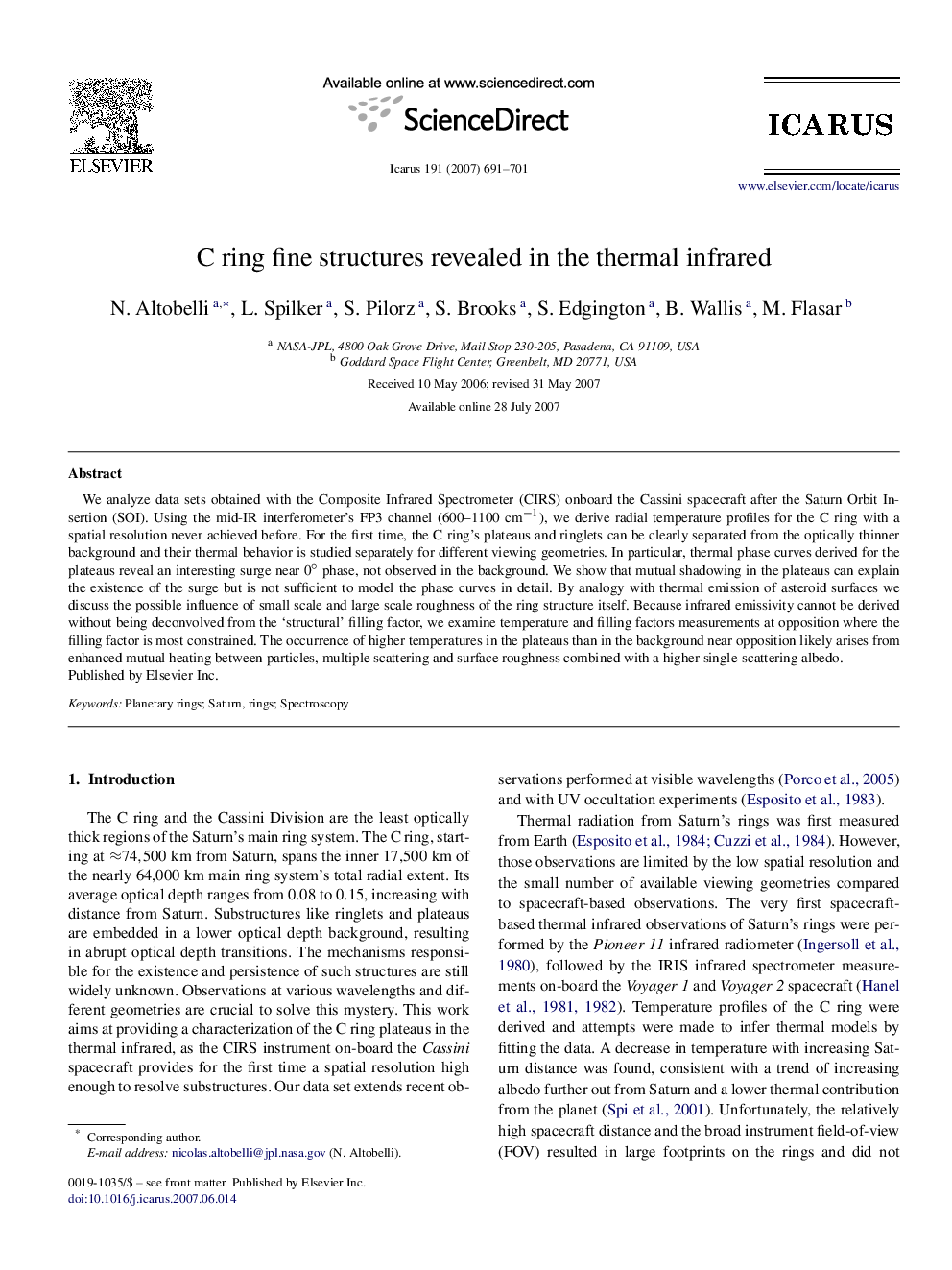| Article ID | Journal | Published Year | Pages | File Type |
|---|---|---|---|---|
| 1775482 | Icarus | 2007 | 11 Pages |
Abstract
We analyze data sets obtained with the Composite Infrared Spectrometer (CIRS) onboard the Cassini spacecraft after the Saturn Orbit Insertion (SOI). Using the mid-IR interferometer's FP3 channel (600-1100 cmâ1), we derive radial temperature profiles for the C ring with a spatial resolution never achieved before. For the first time, the C ring's plateaus and ringlets can be clearly separated from the optically thinner background and their thermal behavior is studied separately for different viewing geometries. In particular, thermal phase curves derived for the plateaus reveal an interesting surge near 0° phase, not observed in the background. We show that mutual shadowing in the plateaus can explain the existence of the surge but is not sufficient to model the phase curves in detail. By analogy with thermal emission of asteroid surfaces we discuss the possible influence of small scale and large scale roughness of the ring structure itself. Because infrared emissivity cannot be derived without being deconvolved from the 'structural' filling factor, we examine temperature and filling factors measurements at opposition where the filling factor is most constrained. The occurrence of higher temperatures in the plateaus than in the background near opposition likely arises from enhanced mutual heating between particles, multiple scattering and surface roughness combined with a higher single-scattering albedo.
Related Topics
Physical Sciences and Engineering
Earth and Planetary Sciences
Space and Planetary Science
Authors
N. Altobelli, L. Spilker, S. Pilorz, S. Brooks, S. Edgington, B. Wallis, M. Flasar,
